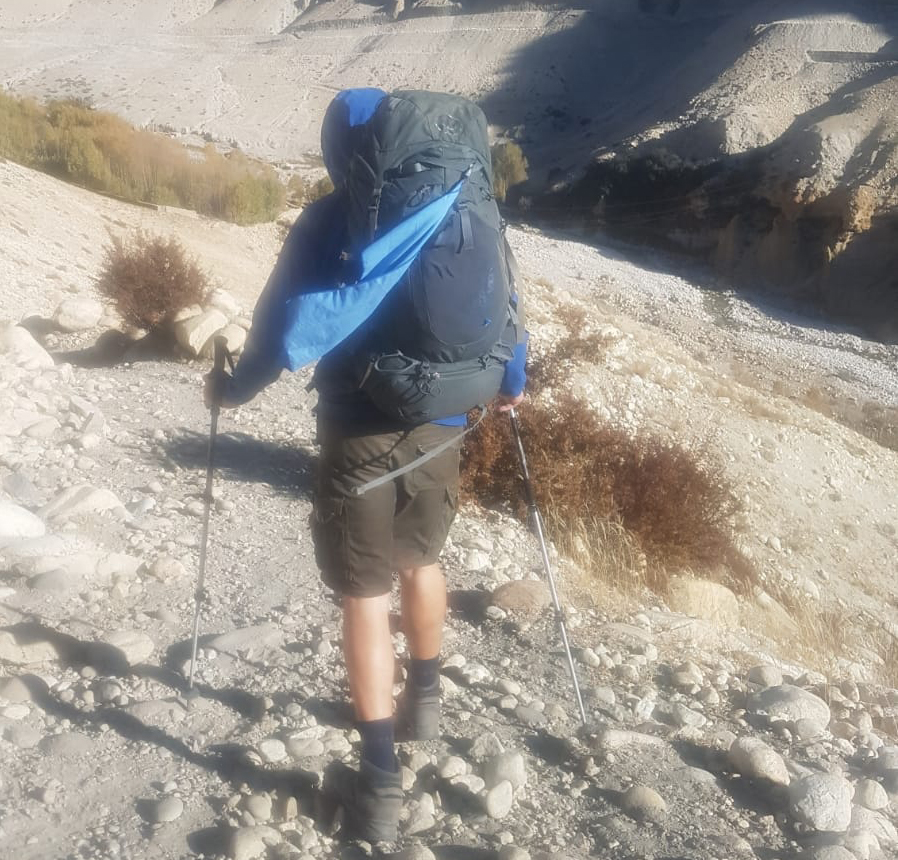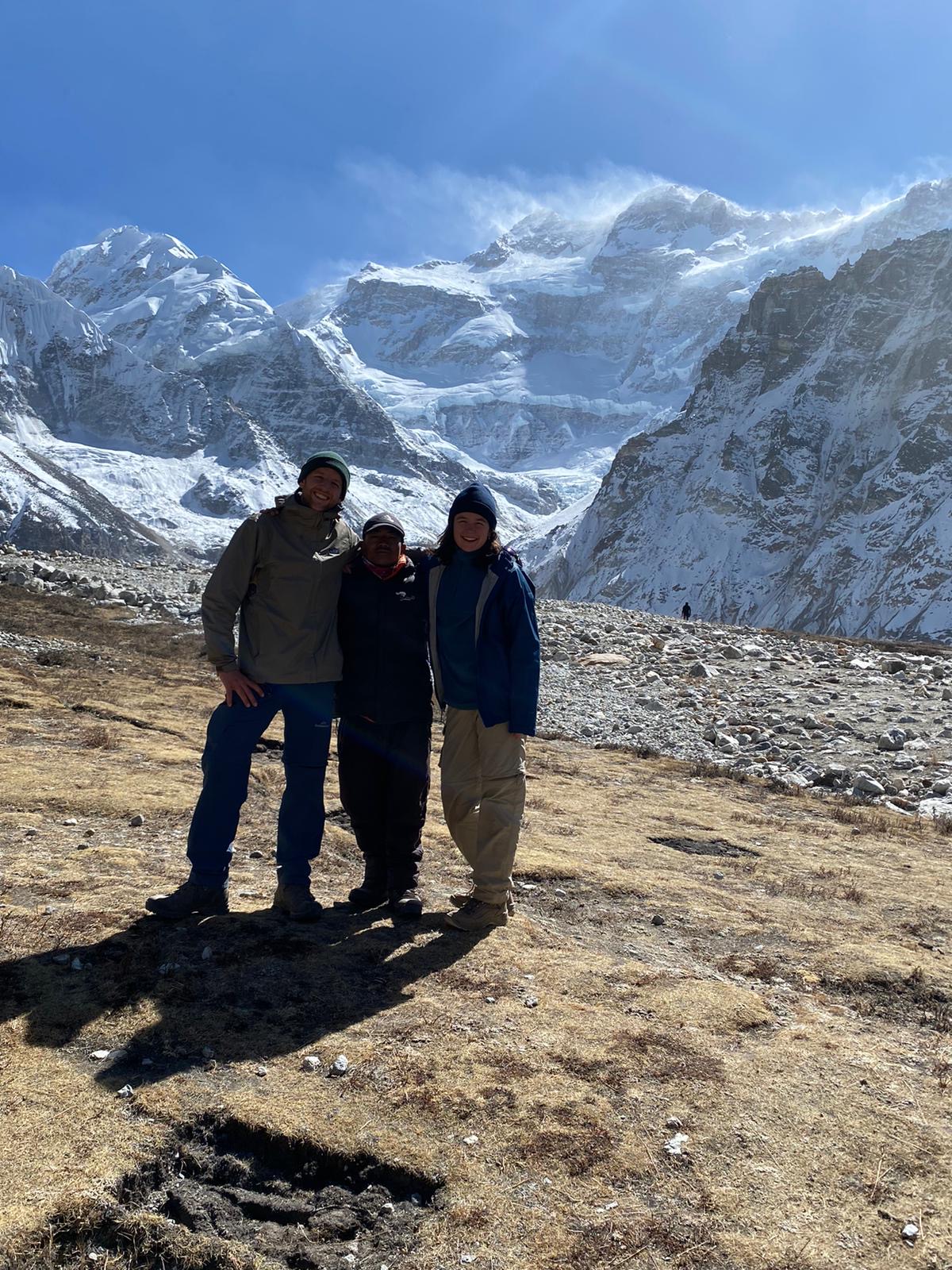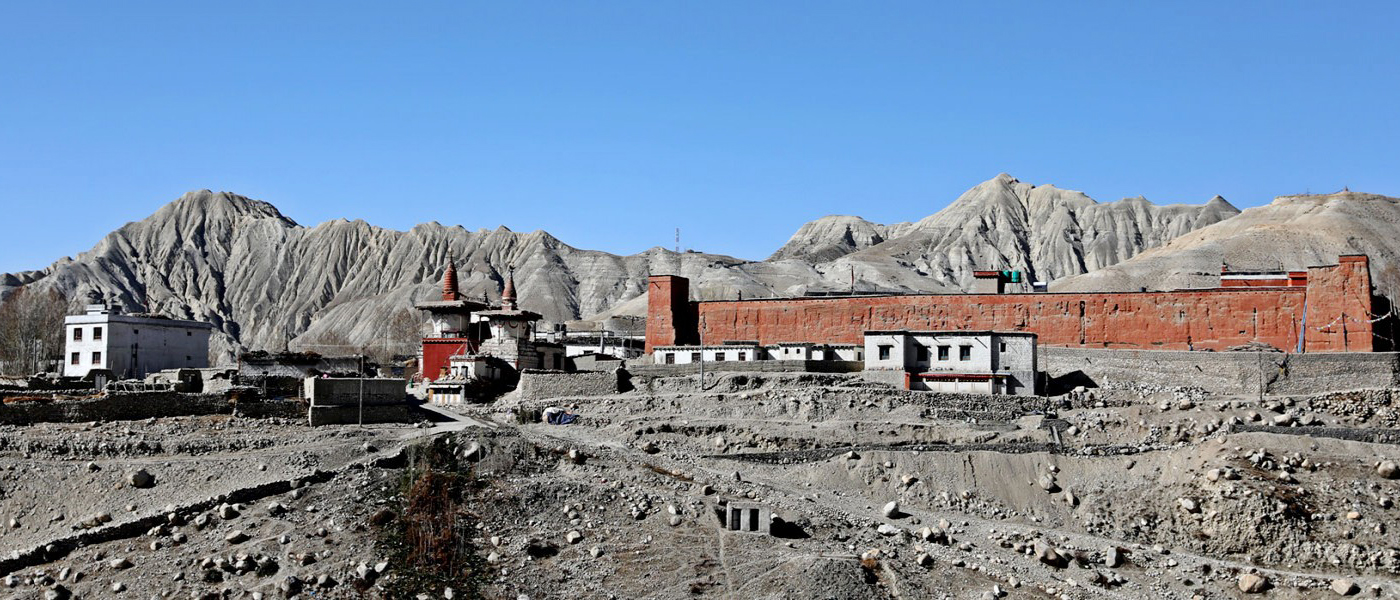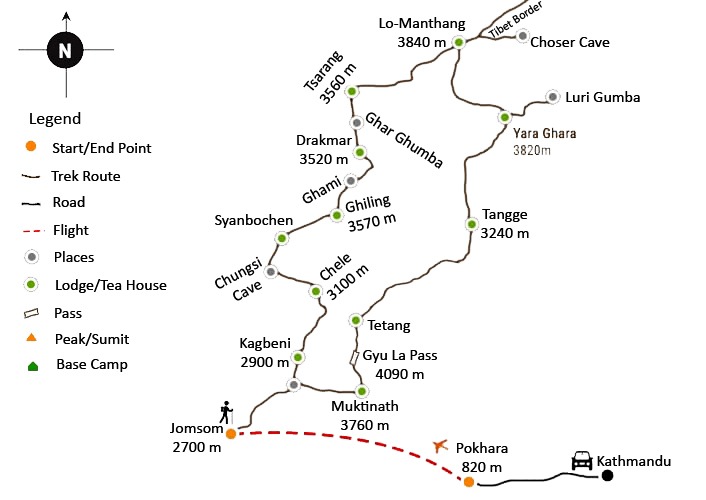Upper Mustang Trek
Upper Mustang Trek is a popular trekking route in Nepal that takes you through the remote and isolated region of the Mustang. It is located in the north-central part of Nepal, bordering Tibet. The Upper Mustang region is also known as the Last Forbidden Kingdom, as it was closed to outsiders until 1992. The trek takes you through the ancient and mysterious land of Mustang, with its stunning landscapes, unique culture, and impressive rock formations. The trek starts from Jomsom, a small town in the Annapurna region, and follows the Kali Gandaki River through a barren and arid landscape. You will pass through small villages, ancient monasteries, and colorful prayer flags, and encounter friendly locals who are proud of their culture and traditions.
The trek reaches its highest point at Lo Manthang, the capital of Mustang. Here, you can explore the ancient walled city, visit the palace of the former king, and witness the unique Tibetan-style architecture. The trek also includes a visit to the Luri Gompa, an ancient cave monastery with stunning wall paintings and murals. The best time to go for the Upper Mustang Trek is from March to November when the weather is dry and clear. The trek is considered moderate to difficult, with altitudes reaching up to 3,800 meters, so proper acclimatization is necessary. It is a restricted area, so a special permit is required, which can only be obtained through a registered trekking agency in Nepal.
Trip highlights
- Takes through the remote and isolated region of the Mustang
- Explore the ancient walled city, visit the palace of the former king, and witness the unique Tibetan-style architecture
- Follows the Kali Gandaki River through a barren and arid landscape
- Pass through small villages, ancient monasteries, and colorful prayer flags, and encounter friendly locals who are proud of their culture and traditions
Why the Upper Mustang Trek is restricted?
It is restricted because it is located in a remote and sensitive area of Nepal that shares a border with Tibet. The Nepalese Government has imposed restrictions on this region to preserve its cultural heritage and protect its fragile environment. The area was closed to foreigners until 1992, and even now, access to the Upper Mustang region is strictly controlled by the government.
The area was once the center of the ancient kingdom of Lo and it still retains much of its traditional Tibetan culture and architecture. The government is keen to preserve this unique cultural heritage, which is why it restricts access to the region. Additionally, the Upper Mustang region lies in lies in a rain shadow, and the environment is very fragile. The government wants to limit the number of tourists to protect the natural environment from damage.
To enter the Upper Mustang region, tourists are required to obtain a special trekking permit and must travel with a licensed guide. The government also imposes a minimum daily spending requirement on tourists to limit the number of visitors to the region. While these restrictions can be a bit of a hassle for travelers, they help ensure that the unique culture and environment of the Upper Mustang region are preserved for future generations to enjoy.
Upper Mustang Trek Permit
While trekking on this route, you need to obtain a special trekking permit. The permit is issued by the Nepalese government and is intended to control the number of tourists visiting the area and to preserve its unique culture and environment.
To obtain a permit for the Upper Mustang trek, you must first book your trek with a registered trekking company in Nepal. The company will apply for the permit on your behalf, and you will need to provide them with your professional information and a copy of your passport. The cost of the permit varies depending on the time of year you plan to trek and the length of your stay in the Upper Mustang. As of 2021, the permit fee is USD 500 per person for the first 10 days and USD 50 per day for each additional day.
It is worth noting that the Upper Mustang region is a rain-shadow area and can be trekked throughout the year. However, the best time to trek in the Upper Mustang is from March to May and from September to November.
Lo-Manthang City in Upper Mustang
Lo-Manthang is a remote town located in the Upper Mustang region of Nepal, near the border with Tibet. It is the capital of the former kingdom of Lo and is also known as “Mustang’s Hidden Kingdom”. The town is situated at an elevation of 3840 meters (12598 feet) and has a popular of around 900 people.
Lo-Manthang is famous for its unique culture, architecture, and history. The town is surrounded by a 6-meters high wall made of mud and stone, which helped to preserve the ancient buildings and temples within. The town’s main attraction is the Royal Palace; a four-story building that was built in the 15th century and is still inhabitant by the descendants of the former royal family.
The people of Lo-Manthang are predominantly of Tibetan origin and speak a dialect of the Tibetan language. They follow a unique form of Tibetan Buddhism known as the “Lo-Ba” tradition, which incorporates elements of both Bon and Mahayana Buddhism. The town is also famous for its annual Tiji festival, which celebrates the victory of lord Buddha’s incarnation over a demon.
Due to its remote location and the need for a special permit, visiting Lo-Manthang can be challenging. However, the town’s unique culture and history make it a popular destination for adventurous travelers and cultural enthusiasts.
Details Itinerary
Day 01: Arrive in Kathmandu
The team of Blue Sheep Trek will be there for you to pick up and welcome you. From the airport, you will take you through Thamel and you will take some rest at the hotel. At the hotel, there will be a guide with a brief description of the trek.
Day 02: Sightseeing in Kathmandu
Kathmandu is a fantastic destination for sightseeing, with its rich cultural heritage and beautiful landscapes. Today, we will spend who day in the Kathmandu Valley. This day is not only for exploring Kathmandu but also to prepare for the special trekking permit. It is because the Upper Mustang Trek is a restricted trekking area where we need a special trekking permit.
Day 03: Drive to Pokhara
Start by heading west on Prithvi Highway the road is the main highway that connects Kathmandu to Pokhara. Follow Prithvi Highway for approximately 200 kilometers. The road winds through the mountains and offers stunning views of the Himalayan range. The drive from Kathmandu to Pokhara can take anywhere from 6 to 7 hours.
Day 04: Fly to Jomsom and walk to Kagbeni (2830m / 5hrs)
From Pokhara, very early in the morning, we will fly toward Jomsom. From Pokhara, it takes almost 25 minutes to reach Jomsom. After reaching Jomsom, we will move toward Kagbeni. Along the way, the trail offers scenic views of the surrounding mountains and the Kali Gandaki River. The trail passes through the picturesque villages of Marpha before entering Kagbeni.
Day 05: Kagbeni to Chhusang (2800m / 6hrs)
Start your trek from Kagbeni, and head south along the Kali Gandaki River. The trail is to follow and you will pass through several small villages along the way. After a few hours of trekking, you will reach the villages of Tangbe. From Tangbe, continue south until you reach the villages of Chhusang. The village is located at the confluence of the Kali Gandaki River and the Narshing Khola River and is known for its red cliffs and beautiful scenery.
Day 06: Chhusang to Somare (3340m / 6hrs)
The trail from Chhusang to Somare is relatively easy and can be completed in a day. The trail follows the Kali Gandaki River and passes through several small villages and scenic landscapes. Along the way, you will see beautiful views of the Himalayan Mountains, including Nilgiri, Annapurna, and Dhaulagiri. The trail is easy to follow, but it can be rocky and steep in some places.
Day 07: Somare to Gheling (3540m / 5hrs)
The trail passes through several small villages and lush forests and across the Kali Gandaki River. From here, you will follow the trail that leads you through the forest of rhododendron, pine, and oak trees. Along the way, you will also pass through several other small villages including Samar and Chungsiro. After 4 to 5 hours of trekking, you will reach the small villages of Gheling.
Day 08: Gheling to Tsarang (3560m / 6hrs)
From Gheling, the trail heads towards the east and passes through a barren landscape with stunning views of the Himalayan Mountains. You will pass through small settlements and chortens along the way. On this day; we get a chance to cross Nyi La Pass. From here, you can enjoy a mesmerizing view of Nilgiri, Dhaulagiri, and Annapurna. And after crossing Nyi La Pass, the trail descends towards Tsarang.
Day 09: Tsarang to Lo-Manthang (3700m / 5hrs)
Today, the trek starts at the small villages of Tsarang. From Tsarang, you will trek toward Lo Gekar, which is a small village located on the way to Lo-Manthang. And from Lo Gekar, you will trek toward Lo-Manthang where we are going to spend overnight here.
Day 10: Rest day in Lo-Manthang
Lo-Manthang is a beautiful and ancient walled city. On this day, we will stroll through the narrow streets of the city and visit the many ancient temples, palaces, and monasteries that dot the landscapes. You can also visit the Mustang Royal Palace Museum to learn more about the region. Lo-Manthang is surrounded by stunning landscapes, including snow-capped peaks, deep canyons, and rolling hills.
Day 11: Lo-Manthang to Dhakmar (3810m / 6hrs)
With descents from Lo-Manthang to the Kali Gandaki River, this is followed by a steep climb up to the pass of Marang La pass. From the pass, the trail descends to the village of Ghami. From Ghami, the trail continues along the dry and barren landscapes and also passes through small villages and monasteries. The final stretch of the trek involves a steep climb up to the village of Dhakmar.
Day 12: Dhakmar to Syangboche (3540m / 6hrs)
On this day trek takes you through beautiful villages, with a towering cliff on either side. The landscapes are dotted with small villages and monasteries, giving you a glimpse of local life in the region. After trekking for a few hours, you will reach the small village of Samar. After leaving Samar, the trail becomes steeper, and you will need to climb several steep inclines before reaching Syangboche.
Day 13: Syangboche to Chhusang (2800m / 6hrs)
From Syangboche, you will need to follow the trail descending down to the village of Ghami. After reaching Ghami, you will need to continue trekking along the trail that Tsarang. From Tsarang, you will need o continue along the trail that passes through the village of Lo Gekar, before finally reaching the village of Chhusang.
Day 14: Chhusang to Kagbeni (2830m / 5hrs)
Along the way, you will pass through several small villages including Tangbe and Jharkot, which offer a glimpse into local life and culture. The trail passes through the beautiful Kali Gandaki Valley, which is known for its stunning scenery and unique geology. And from here, continue walking upstream along the Kali Gandaki until you reach the village of Kagbeni.
Day 15: Kagbeni to Jomsom (2715m / 4hrs)
You will follow the Kali Gandaki River through a scenic valley. Along the way, you will pass through small villages and ancient monasteries. The trail is mostly flat and easy to follow, although there may be some sections with loose rocks and sand. The trail passes through scenic landscapes, barren hills, and traditional Tibetan-style villages.
Day 16: Fly toward Pokhara
From Jomsom, we will take a flight toward Jomsom. After 25 minutes of flight from Jomsom, you will reach Pokhara. In the evening time in Pokhara, we will take a short tour around the Phewa Tal which is an awesome time, and spend overnight here.
Day 17: Drive back to Kathmandu
The trek begins your journey from Pokhara. From Pokhara, you will need to head toward the Prithvi Highway. Once you reach the Prithvi Highway, follow it towards Kathmandu Valley. Along the way, you will come across several spots where you can stop and take a break. Some popular stops include the Trishuli River, Malekhu, and Mugling. After a journey of around 200 kilometers, you will reach Kathmandu. After reach in Kathmandu, you will take toward Hotel in Thamel Bazaar. In the evening time, you can walk around Thamel Bazaar.
Day 18: Final departure
Our team and the guide who is with you on your trekking journey will be at the international airport to see you off. We will say our goodbye and hope that you will give us an opportunity to trek with you all over Nepal.
Manual Note :
Trip Reviews

Name: John
JohnAnnapurna Base Camp Trek with Sukman
“The Annapurna Base Camp trek was one of the most beautiful experiences of my life. The scenery was breathtaking and the people were incredibly friendly. It was a challenging trek, but well worth the effort.”

Name: Sarah
CanadaABC trek with Bluesheep trek
“I absolutely loved the Annapurna Base Camp trek. The scenery was incredible, from lush forests to towering snow-capped peaks. The highlight was definitely reaching base camp and seeing Annapurna South up close.”

Name: Mike
AustraliaAnnapurna Trek with Sukman
“The Annapurna Base Camp trek was an amazing experience. The trail was well-maintained and easy to follow, and the tea houses along the way were cozy and welcoming. The view from base camp was unbelievable – I felt like I was on top of the world!”

Name: Cecelia Muller
USAAnnapurna Circuit, March 2023
I did the Annapurna Circuit this past March and it’s probably the best thing I have done and will ever do in my life. Don’t get me wrong, it was definitely challenging – as someone who loves her hot showers – but Sukman made the whole process such a breeze. He found our group teahouses and called ahead of time to reserve our slots. He also made sure we went at a reasonable pace and doled out lunch and tea breaks as the group needed it. At higher elevations, he was even more careful to pay attention to the elevation we gained each day and each person’s symptoms (or more hopefully, lack thereof) to avoid altitude sickness.

Name: Patrick Wasil
USAAnnapurna Circuit Trek
I hiked the Annapurna Circuit in March 2023. Sukman went above and beyond to make sure that everything went smoothly. The hike itself certainly was challenging, but Sukman made it as easy as possible. He has extensive knowledge of the trail, towns, and tea houses along the way. He called ahead to reserve rooms for us in the best tea houses because they can get crowded depending on the season. He curated tea and meal breaks as well. I particularly liked how closely he monitored the health and status of everyone in our group keeping an eye out for any symptoms of altitude sickness and adjusting the hike accordingly. Overall, Sukman was a fantastic guide on the Annapurna Circuit Trek and I will definitely utilize his services again on my next trip to Nepal!

Name: Uli
GermanyUpper Mustang
I trekked with Shukman from Blue Sheep Trek for 10 days in Upper Mustang. Shukman is a very nice guide. He has a good feeling what his customers need. I recommend trekking with Blue Sheep Trek. Upper Mustang is a incredible beautiful place. Thank you Shukman!

Name: Anouk
We’ve had a lovely time in the Kanchenjunga area! The trek was beautiful and challenging, but our guide Sukman made sure that everything was fixed and taken care of, so we could enjoy every moment of it!


